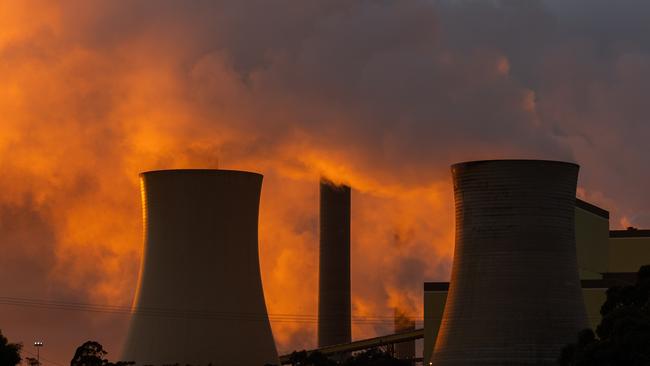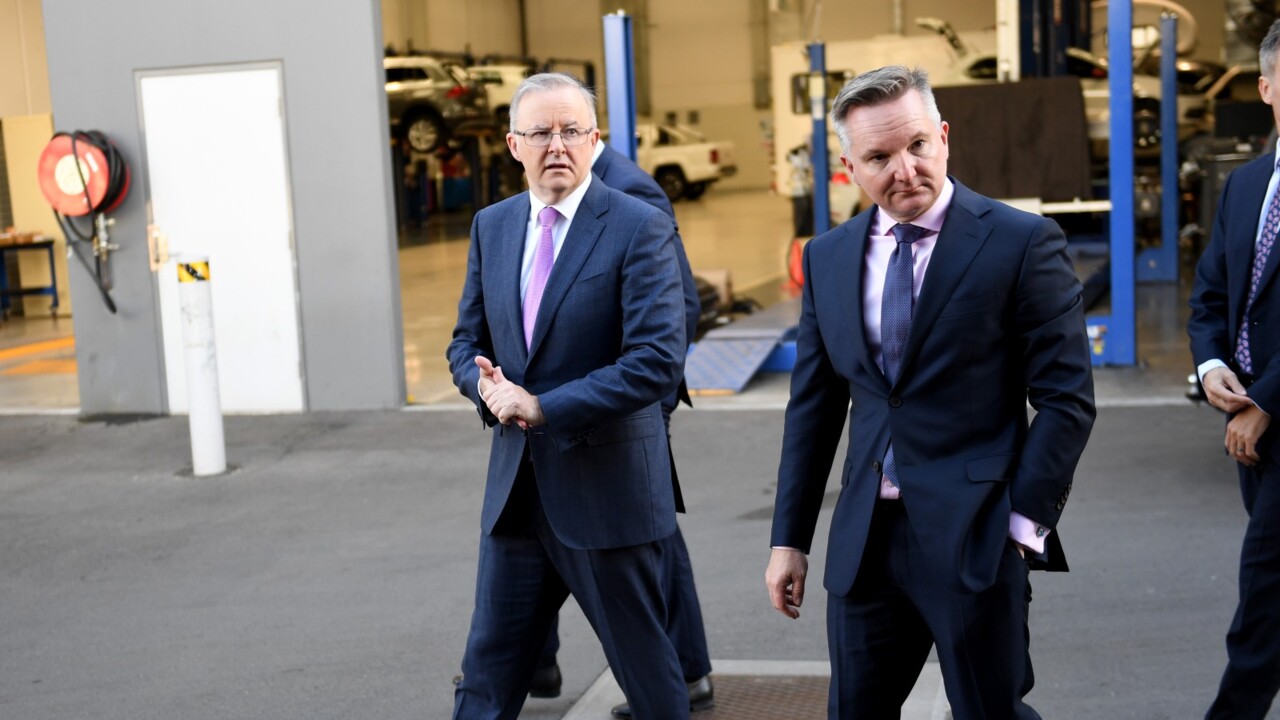Carbon emissions rise looms as a test for Labor’s renewables future
Carbon emissions from electricity generation increased in the most recent March quarter compared with 2023 for the first time in seven years.

Energy experts and the federal opposition have warned that the first March-quarter increase in carbon emissions from electricity generation in seven years highlights the challenges for the Albanese government in transitioning to a renewables-led future.
Although the long-term trend for carbon emissions from electricity generation remains downward, analysis of data from the Australian Energy Market Operator shows an increase in both coal generation and total carbon dioxide emissions in the National Energy Market between the first quarters of 2023 and 2024 – for the first time since 2017.
AEMO says the increases have come amid a warmer than average summer in significant parts of the grid, which, alongside population growth, saw a 1.7 per cent increase in overall demand for electricity in the three months to March, compared with the same time the previous year.
The increased emissions and coal-fired generation came alongside a slight increase in renewable energy generation, but amid a decrease in gas-fired generation, as the ACCC’s latest outlook – to be released on Friday – warns NSW and Victoria face gas shortages this winter unless extra supplies can be shipped from Queensland.

Centre for Independent Studies energy program director Aidan Morrison said that while the increase in emissions had in part been driven by an increase in overall demand, a slowdown in the energy transition to wind and solar was also a key factor.
He said he did not believe Australia would succeed in shifting away from needing baseload coal-fired power in the near future.
“It will remain stubbornly present and a significant emissions base in our grid for many more years to come. I would point to Germany and California as examples of how this pans out,” he said. “Initially they can see some noticeable reductions, but after billions of dollars are spent, progress slows, and emissions reductions slow to a crawl. Renewables won’t get us there. Even if building nuclear does take 15 years, that would probably still see us decarbonising faster than persisting with the present strategy.”
Grattan Institute energy program director Tony Wood said one of the key obstacles faced in reaching the federal government’s renewable energy target of 82 per cent by 2030 was that “we haven’t seen very many renewables being announced or actually built in the last year or two”.
“The Clean Energy Council have said we’re well behind. We’re moving at about half the rate necessary to reach 82 per cent. Part of it is uncertainty about government policy. Part of it is transmission isn’t being built,” Mr Wood said.

He said the decreasing reliability of ageing coal-fired power stations, coupled with predicted gas shortages, placed Victoria in particular in danger of losing power. The ACCC is warning in its latest report that NSW and Victoria will need an additional 25 petajoules of gas to meet expected demand during the period of peak demand in the three months to September.
The competition watchdog’s outlook was positive for the east coast overall, with the latest outlook showing a relatively skinny surplus of 6PJ in the September quarter – even in the event that all of the big LNG exporters’ uncontracted gas was sold. ExxonMobil last week, however, slammed suggestions that the southern states could rely on Queensland to plug shortfalls, saying there were pipeline constraints.
Interrogation of the open source data analysis tool OpenNEM, which displays National Electricity Market data drawn directly from AEMO, shows that total electricity network emissions increased from 31.8 million tonnes of CO2 equivalent in the first quarter of 2023 to 32.3 million tonnes in the first quarter of 2024 This is the first quarter-on-quarter increase since 2017, when 43.8 million tonnes were emitted, compared with 43.5 million tonnes in 2016.
Black coal electricity generation in NSW has gone up quarter-on-quarter for the first time since 2018, from 11,052 gigawatt hours in the March quarter of 2023 to 11,826GWh in the most recent quarter.

Similarly, brown coal generation in Victoria has increased for the first time since 2021, despite significant coal generation outages occurring in the state during this period, going from 7,879GWh in the March quarter of 2023 to 8,027GWh a year later.
An AEMO spokesman noted that total market share for renewable generation had increased from 37.3 per cent in the March quarter of 2023 to 38.9 per cent in the most recent quarter, compared, with coal generation decreasing from 58.0 per cent to 56.8 per cent over the same period.
A spokeswoman for Energy Minister Chris Bowen said emissions in the national electricity market had been “falling due to increasing renewable capacity”.
“We know that renewable energy not only helps reduce emissions, it’s also the cheapest form of energy. The big boost to renewables is putting downward pressure on power bills for households and industry,” the spokeswoman said.
Opposition energy spokesman Ted O’Brien said Mr Bowen had “completely lost control of Australia’s energy system as one bad policy after the next takes its toll”. “Labor was elected on a promise to reduce household electricity bills by $275, to cut emissions by 43 per cent, and to keep the lights on, yet Australians are now paying among the highest power bills in the world for a higher-emitting electricity grid which is set to experience more regular blackouts,” Mr O’Brien said.







To join the conversation, please log in. Don't have an account? Register
Join the conversation, you are commenting as Logout